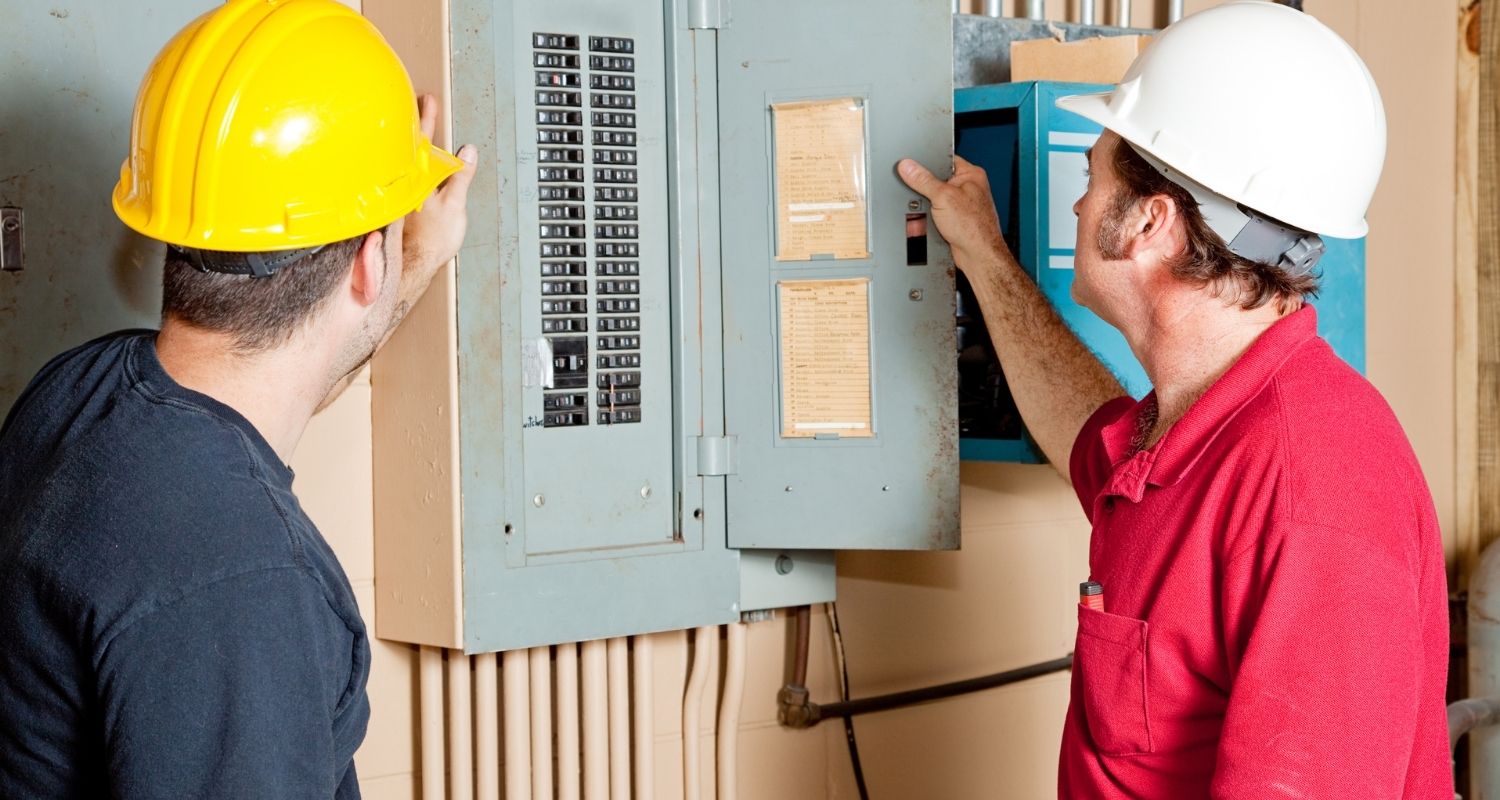Table of Contents:
- What is Electrical Panel?
- What is the Purpose of An Electrical Panel?
- Electrical Panel Types
- Considerations for Electrical Service Panel Safety
- 5 Benefits of Upgrading Your Electrical Panel
What is Electrical Panel?
An electrical panel (alternatively referred to as a breaker panel) is a metal box with a door often installed into a wall in a tucked-away corner of your house. You’ll discover all of your home’s breaker switches inside.
Breaker switches may be toggled on and off. Additionally, they will shut down automatically if there is an excessive amount of electrical power flowing through them – that is their purpose.
The main circuit breaker is located inside the electrical panel and controls the electricity to the whole home. Additionally, you’ll see multiple breakers, each responsible for powering a certain area of your house. Each breaker should be labelled with the section of the home it regulates.
What is the Purpose of An Electrical Panel?
When a circuit is overloaded, circuit breakers trip (turn off). They are safety measures designed to protect electrical gadgets and the house’s structure. If the breaker does not trip and the electricity is turned off, overloaded circuits might cause fires or electrocute people.
Each breaker is in charge of a single circuit; typically, each circuit corresponds to a room or part of the home. Electric ranges and air conditioners, for example, may have their breaker.
A breaker is intended to handle a certain electrical load; if the electrical load exceeds the breaker’s capacity, the breaker shuts off. This occurs when too many gadgets are hooked onto a single circuit.
Electrical Panel Types
1. Main Circuit Breaker Panel
The main breaker panel regulates the flow of energy to the various rooms in your home. It can shut out the electricity to your home, including the circuit breaker. They are categorized according to the number of circuits they can manage and the amperage they can provide.
2. Fusible Link Boxes
Fuse boxes are made up of little fuses that fit into an electrical panel. These are intended to guard against circuit overload. When an excessive current flows through the fuse, it will short out.
3. Main Lug Panel
Lugs are used in the main lug panels, and the line wires are routed via these lugs. They include the main breaker as the meter’s disconnect. You may connect the main lug panel to the main panel’s breaker, in which case the main lug panel will function as a sub-panel.
4. Sub Panel
The sub-panels are supplied with electricity through a circuit from the main panel. They lack separate disconnects and enable you to fine-tune the electricity distribution throughout the home. These are ideal for households with several circuits in the same location.
5. Transfer Switches
These are ideal for circuits that include a backup power generator. It operates by converting generator power to electrical power through the panel. Transfer switches are classified into two types: manual and automated.
Considerations for Electrical Service Panel Safety
- Under normal circumstances, it is safe to touch the service panel’s exterior door while it is closed.
- Never attempt to operate on an exposed electrical service panel without removing the door and protective front cover. Avoid contacting the cables that enter the panel from the box’s top. If you get a shock from the service lug, it is almost certain to be lethal.
- It is wrong to believe that turning off the panel’s primary circuit breaker and removing the protective cover would keep you safe. The main breaker interrupts electricity to the circuits of the home branch. However, it does not cut off electricity from the utility service lines to the panel.
- Apart from being cautious about the portions of the service panel, you contact with your hands. Tools may contact live service wires and cause you to get an electric shock.
5 Benefits of Upgrading Your Electrical Panel
1. Improved security features
Even if your homeowner’s insurance covers losses, several other valuable items in your home are not covered by insurance. Electrical panels from previous generations or faulty ones often overheat and catch fire. And when they do, they have the potential to set fire to your whole property. Additionally, if you have children in your house, this poses a grave hazard to their life and health.
2. Additional circuit capacity
If you’re planning a significant renovation or installing some new heavy appliances in your home, you may want a new, updated electrical panel. Most likely, your previous electrical panel was selected to fit the appliances you had at the time; but as you add more, you will want a panel with increased circuit capacity.
3. Insurance conformity
Numerous insurance companies require that you have a specific amp rating for your electrical panel before designating you as compliant. For instance, they may ask that you have a panel with a minimum of 100 amps.
4. Additional outlets
Modern electrical panels accommodate more circuits and, therefore, additional outlets. More outlets enable you to utilize a greater variety of equipment, including more air conditioners, hot tubs, and washing machines.
5. Improved property value
If you’re attempting to sell your home, an old electrical panel may prevent you from obtaining the ideal price. As indicated before, residences with older panels are deemed dangerous for occupants. Potential buyers and real estate agents see this as a severe issue and thus undervalue such homes.




